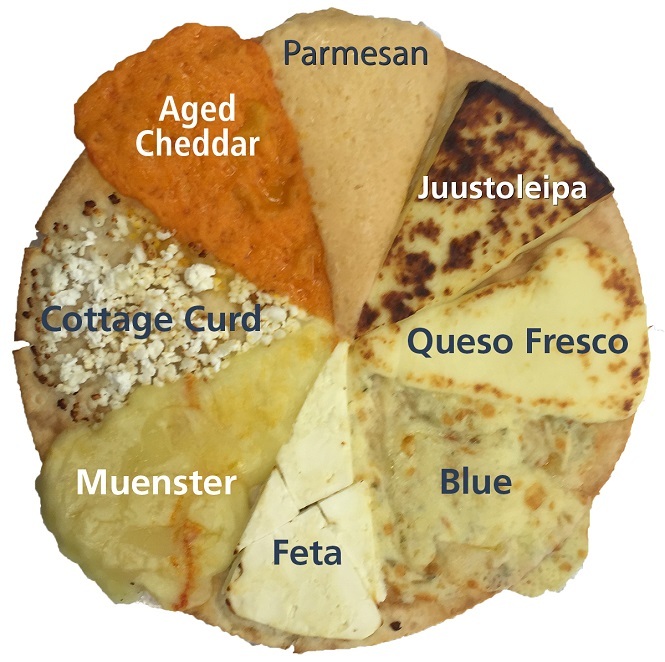Melt Wheel
Cheese Melt Wheel
Many factors determine to what extent a cheese will melt, flow, and stretch. For more information:
The Melt and Stretch of Cheese - Dairy Pipeline
Click a cheese below to learn more about melt!


Parmesan is a low moisture cheese that is also quite high in salt. This can restrict flow of the cheese. If the Parmesan is young there may be enough intact protein to allow stretch.
Bread cheese is a low acid cheese with quite a high pH (~6.5). This lack of acidity means there is still lots of bound calcium cross-linking the protein structure.
Queso fresco, for much of the same reason as Juustoleipa, doesn't melt/flow to a great degree. This cheese is a common cheese to fry with, so holding its shape is important.
Blue cheese exhibits high melt due to protein break down (mold proteases) and most of the calcium being removed from structure (blue cheese starts at a low pH before ripening).
Feta doesn't melt due to its low pH (~4.7). While the high amounts of acid means calcium is dissolved from the structure, a pH this low causes proteins to interact strongly with each other.
Muenster cheese has a moderate moisture content with a good amount of fat and some acidifcation. These characteristics cause good melt, flow, and stretch; similar to mozzarella.
Cottage cheese doesn't melt for the same reason as feta, too much acid (too low of pH) causes proteins to interact strongly with each other and prevents melt.
Aged cheddar has some of its protein structure broken down (proteolysis). This can cause the fat will to leak out and form pools, and stretch will be lacking. Acid development (Ca++ removal) means melt.

